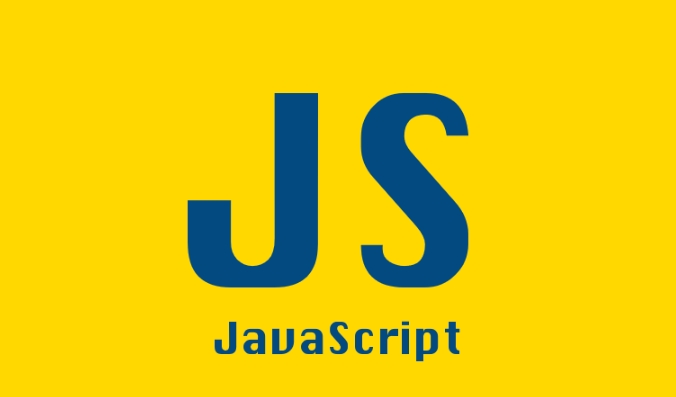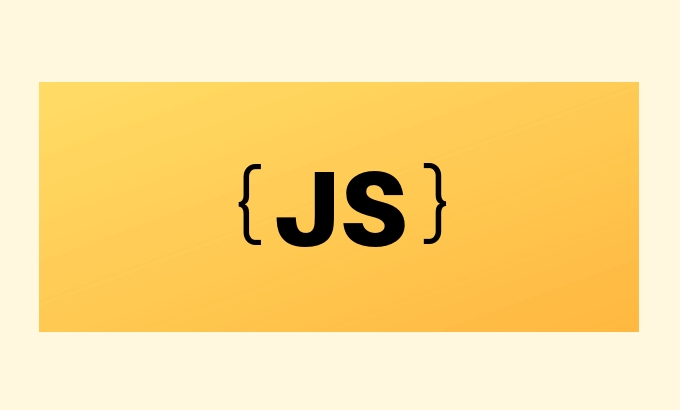Both Brotli and Gzip can be used for front-end optimization, but Brotli has higher compression rate and better Gzip compatibility. It is recommended to enable Brotli first and retain Gzip as a downgrade solution; .br and .gz files can be generated through the Webpack compression-webpack-plugin plug-in, and the compression level, file type and threshold are configured; when deploying, the corresponding module and MIME types must be configured on the server (such as Nginx or Apache), and the .br file must be returned in order, followed by .gz, and the original file; precautions include checking the Accept-Encoding request header, file path, module loading, MIME type, avoiding double compression and reasonably selecting the compression level.

Brotli and Gzip are commonly used compression methods in front-end optimization, which can effectively reduce transmission volume and speed up web page loading. This article talks about how to use these two compression methods in JavaScript projects, especially some key points during deployment.

The difference between Brotli and Gzip
Brotli and Gzip are both algorithms used to compress text resources (such as JS, CSS, HTML), but they have several main differences:
- Compression rate : Brotli's compression rate is usually higher than Gzip, especially for JavaScript files.
- Browser support : Modern mainstream browsers support Brotli, but if you still need to be compatible with old systems (such as IE), Gzip may be more secure.
- Usage scenario : It is generally recommended to enable Brotli first, while retaining Gzip as a downgrade solution.
Therefore, when deploying, it is best to match both, taking into account performance and compatibility.

How to generate compressed files
To output .br (Brotli) and .gz (Gzip) formats in the project, a build tool is usually required to handle it with plug-ins.
Taking the common Webpack as an example, you can use compression-webpack-plugin to implement it:

npm install compression-webpack-plugin --save-dev
Then add the configuration in webpack.config.js :
const CompressionPlugin = require("compression-webpack-plugin");
module.exports = {
plugins: [
new CompressionPlugin({
filename: "[path][base].gz",
algorithm: "gzip",
test: /\.js$|\.css$/,
threshold: 1024,
minRatio: 0.8,
}),
new CompressionPlugin({
filename: "[path][base].br",
algorithm: "brotliCompress",
test: /\.js$|\.css$/,
compressionOptions: { level: 11 },
threshold: 1024,
minRatio: 0.8,
}),
],
}; After packaging this way, the corresponding .gz and .br files will be automatically generated.
Other build tools such as Vite or Rollup also have similar plugins, with the basic logic the same: specify the file type to compress, set the compression level and threshold.
How to enable compression on servers during deployment
It is not enough to have compressed files alone, and the server must be configured correctly to return the compressed version according to client requests.
Nginx Example
If you are using Nginx, you can add:
location ~ \.js$ {
types {}
default_type application/javascript;
add_header Content-Encoding br;
gzip_static on;
brotli_static on;
}Or more general:
location ~ ^/. \.(js|css|html|svg)$ {
try_files $uri.br $uri.gz $uri =404;
add_header Vary Accept-Encoding;
} Note that the order here is very important. Check .br first, then check .gz , and finally the original file.
Apache Example
Apache can enable compression through .htaccess :
<IfModule mod_rewrite.c>
RewriteEngine On
RewriteCond %{HTTP:Accept-Encoding} br
RewriteCond %{DOCUMENT_ROOT}%{REQUEST_FILENAME}.br -f
RewriteRule ^(.*)$ $1.br [L]
RewriteCond %{HTTP:Accept-Encoding} gzip
RewriteCond %{DOCUMENT_ROOT}%{REQUEST_FILENAME}.gz -f
RewriteRule ^(.*)$ $1.gz [L]
</IfModule>
<IfModule mod_mime.c>
AddEncoding br .br
AddEncoding gzip .gz
</IfModule>The core idea of these configurations is: judge whether compression is supported based on the request header, and try to return the corresponding version.
Frequently Asked Questions and Notes
Sometimes you may encounter the problem that compression is not effective, so you can check the following points:
- Is there
Accept-Encoding: br, gzip - Are the built
.brand.gzfiles correctly placed in static directories? - Does the server have corresponding modules enabled (for example, Nginx needs to install
ngx_http_gzip_static_moduleandngx_brotli) - Is there any error in MIME type? Especially some CDNs will be verified very strictly
- Do not repeat compression, some server-side frameworks will automatically compress content, which will lead to "double compression" problems.
In addition, the higher the compression level, the better. Brotli's compression level is 0~11, and it is recommended to use about 6 by default. The compression effect of level 11 is better, but the construction time will increase a lot.
Basically that's it. Compression doesn't seem complicated, but it's easy to get into a few small pitfalls when it's done. As long as the construction and deployment links are paired together, the page loading speed can be steadily improved.
The above is the detailed content of Implementing JavaScript Brotli and Gzip Compression. For more information, please follow other related articles on the PHP Chinese website!

Hot AI Tools

Undress AI Tool
Undress images for free

Undresser.AI Undress
AI-powered app for creating realistic nude photos

AI Clothes Remover
Online AI tool for removing clothes from photos.

Clothoff.io
AI clothes remover

Video Face Swap
Swap faces in any video effortlessly with our completely free AI face swap tool!

Hot Article

Hot Tools

Notepad++7.3.1
Easy-to-use and free code editor

SublimeText3 Chinese version
Chinese version, very easy to use

Zend Studio 13.0.1
Powerful PHP integrated development environment

Dreamweaver CS6
Visual web development tools

SublimeText3 Mac version
God-level code editing software (SublimeText3)
 How does garbage collection work in JavaScript?
Jul 04, 2025 am 12:42 AM
How does garbage collection work in JavaScript?
Jul 04, 2025 am 12:42 AM
JavaScript's garbage collection mechanism automatically manages memory through a tag-clearing algorithm to reduce the risk of memory leakage. The engine traverses and marks the active object from the root object, and unmarked is treated as garbage and cleared. For example, when the object is no longer referenced (such as setting the variable to null), it will be released in the next round of recycling. Common causes of memory leaks include: ① Uncleared timers or event listeners; ② References to external variables in closures; ③ Global variables continue to hold a large amount of data. The V8 engine optimizes recycling efficiency through strategies such as generational recycling, incremental marking, parallel/concurrent recycling, and reduces the main thread blocking time. During development, unnecessary global references should be avoided and object associations should be promptly decorated to improve performance and stability.
 How to make an HTTP request in Node.js?
Jul 13, 2025 am 02:18 AM
How to make an HTTP request in Node.js?
Jul 13, 2025 am 02:18 AM
There are three common ways to initiate HTTP requests in Node.js: use built-in modules, axios, and node-fetch. 1. Use the built-in http/https module without dependencies, which is suitable for basic scenarios, but requires manual processing of data stitching and error monitoring, such as using https.get() to obtain data or send POST requests through .write(); 2.axios is a third-party library based on Promise. It has concise syntax and powerful functions, supports async/await, automatic JSON conversion, interceptor, etc. It is recommended to simplify asynchronous request operations; 3.node-fetch provides a style similar to browser fetch, based on Promise and simple syntax
 JavaScript Data Types: Primitive vs Reference
Jul 13, 2025 am 02:43 AM
JavaScript Data Types: Primitive vs Reference
Jul 13, 2025 am 02:43 AM
JavaScript data types are divided into primitive types and reference types. Primitive types include string, number, boolean, null, undefined, and symbol. The values are immutable and copies are copied when assigning values, so they do not affect each other; reference types such as objects, arrays and functions store memory addresses, and variables pointing to the same object will affect each other. Typeof and instanceof can be used to determine types, but pay attention to the historical issues of typeofnull. Understanding these two types of differences can help write more stable and reliable code.
 React vs Angular vs Vue: which js framework is best?
Jul 05, 2025 am 02:24 AM
React vs Angular vs Vue: which js framework is best?
Jul 05, 2025 am 02:24 AM
Which JavaScript framework is the best choice? The answer is to choose the most suitable one according to your needs. 1.React is flexible and free, suitable for medium and large projects that require high customization and team architecture capabilities; 2. Angular provides complete solutions, suitable for enterprise-level applications and long-term maintenance; 3. Vue is easy to use, suitable for small and medium-sized projects or rapid development. In addition, whether there is an existing technology stack, team size, project life cycle and whether SSR is needed are also important factors in choosing a framework. In short, there is no absolutely the best framework, the best choice is the one that suits your needs.
 JavaScript time object, someone builds an eactexe, faster website on Google Chrome, etc.
Jul 08, 2025 pm 02:27 PM
JavaScript time object, someone builds an eactexe, faster website on Google Chrome, etc.
Jul 08, 2025 pm 02:27 PM
Hello, JavaScript developers! Welcome to this week's JavaScript news! This week we will focus on: Oracle's trademark dispute with Deno, new JavaScript time objects are supported by browsers, Google Chrome updates, and some powerful developer tools. Let's get started! Oracle's trademark dispute with Deno Oracle's attempt to register a "JavaScript" trademark has caused controversy. Ryan Dahl, the creator of Node.js and Deno, has filed a petition to cancel the trademark, and he believes that JavaScript is an open standard and should not be used by Oracle
 Understanding Immediately Invoked Function Expressions (IIFE) in JavaScript
Jul 04, 2025 am 02:42 AM
Understanding Immediately Invoked Function Expressions (IIFE) in JavaScript
Jul 04, 2025 am 02:42 AM
IIFE (ImmediatelyInvokedFunctionExpression) is a function expression executed immediately after definition, used to isolate variables and avoid contaminating global scope. It is called by wrapping the function in parentheses to make it an expression and a pair of brackets immediately followed by it, such as (function(){/code/})();. Its core uses include: 1. Avoid variable conflicts and prevent duplication of naming between multiple scripts; 2. Create a private scope to make the internal variables invisible; 3. Modular code to facilitate initialization without exposing too many variables. Common writing methods include versions passed with parameters and versions of ES6 arrow function, but note that expressions and ties must be used.
 Handling Promises: Chaining, Error Handling, and Promise Combinators in JavaScript
Jul 08, 2025 am 02:40 AM
Handling Promises: Chaining, Error Handling, and Promise Combinators in JavaScript
Jul 08, 2025 am 02:40 AM
Promise is the core mechanism for handling asynchronous operations in JavaScript. Understanding chain calls, error handling and combiners is the key to mastering their applications. 1. The chain call returns a new Promise through .then() to realize asynchronous process concatenation. Each .then() receives the previous result and can return a value or a Promise; 2. Error handling should use .catch() to catch exceptions to avoid silent failures, and can return the default value in catch to continue the process; 3. Combinators such as Promise.all() (successfully successful only after all success), Promise.race() (the first completion is returned) and Promise.allSettled() (waiting for all completions)
 What is the cache API and how is it used with Service Workers?
Jul 08, 2025 am 02:43 AM
What is the cache API and how is it used with Service Workers?
Jul 08, 2025 am 02:43 AM
CacheAPI is a tool provided by the browser to cache network requests, which is often used in conjunction with ServiceWorker to improve website performance and offline experience. 1. It allows developers to manually store resources such as scripts, style sheets, pictures, etc.; 2. It can match cache responses according to requests; 3. It supports deleting specific caches or clearing the entire cache; 4. It can implement cache priority or network priority strategies through ServiceWorker listening to fetch events; 5. It is often used for offline support, speed up repeated access speed, preloading key resources and background update content; 6. When using it, you need to pay attention to cache version control, storage restrictions and the difference from HTTP caching mechanism.






